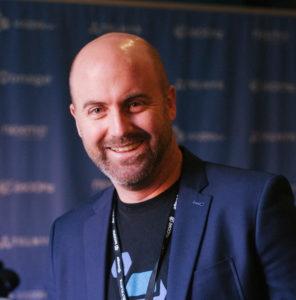Unified communications (UC) at its base is the strategic and systemic integration of enterprise communication services. But once comprehensive integration is achieved, what is the next step? 2600Hz is doing the work that answers that question and provides solutions that connect business communications and optimize business processes. The mark of a quality UC partner is a company that puts energy into both efficiency and evolution. This combination creates a level of innovation that is powering 2600Hz to a top tier UC solutions provider in the industry.
Evolution 1: Automated Deployments
“When we looked at how we could compete with some of the bigger guys, we realized that we couldn’t win by hiring people just to do manual tasks. Our focus became about automation, and how can we engineer our way out of doing tasks in general,” says COO and Co-founder, Patrick Sullivan. “Our first big step was to address how to automate cluster deployment to get customers up and running whether their infrastructure was on AWS or their own data centers. To answer that question, we developed a fully automated deployment tool that only requires the customer to input the server certification data for deployment, either domestically or internationally.”
This type of automation allows 2600Hz to add customers quickly and provide them with the automation tool so they can add clusters themselves. In return, operational costs are reduced due to less manual effort, and customers are empowered to expand at will since they have access to those deployment tools. The need for autonomous expansion is vital for companies to remain competitive and move at the speed of business.
Evolution 2: Automation of Provisions
2600Hz didn’t stop at automating deployment; they continued to address the layers of customer needs. The second level of evolution manages the process of getting phones on a cluster once it’s deployed and functional. “We built a fully automated provisioner tool that allows us to dropship a desk phone to a client site,” explains Sullivan.
“When the phone is installed, it reaches back out to the provisioning system, and it will recognize whose phone belongs to whom. This eliminates the need to configure the phone manually; it is automatically recognized for a plug and play experience. As a result, our service providers can deploy phones much faster now and gives our customers additional security features and functionality.”
Evolution 3: Automated Service Transfer
The third evolutionary component 2600Hz added dealt with the pangs of transition. There are instances when a company may switch communications service providers. Regardless of who is providing service, contact information needs to remain the same. A seemingly small detail, but one that Sullivan and 2600Hz planned for, “The next automation we engineered, which typically requires large teams of employees, is porting. Porting entails moving a phone number for one carrier to another.” While this sounds like a simple process, the actual execution ranges from a few days to up to four weeks. The entire process requires a lot of paperwork and a lengthy chain of signoffs and approvals. However, with 2600Hz’s automated porting, that entire hassle is eliminated.
“All that’s needed is to enter the data being ported, and the numbers are transferred over almost instantaneously”
Evolution 4: Automated Authentication
Even though mobile authentication is increasingly more common, it still should not be taken for granted. One of the smaller automation areas 2600Hz has improved is its mobile app that sits inside its customers’ systems. The mobile app can be downloaded and set up for a specific user. Instead of using multiple credentials, the system will display a QR code on the workstation device, and the app will read the code from the phone. This connects the cellphone and other internal accounts to that particular user. This subtle feature provides the best of both worlds, with cybersecurity integrity is maintained while enhancing the user experience. 2600Hz’s approach to advancing UC is not only setting them apart in their industry; it’s setting a new standard along the way.
from UC Today https://ift.tt/3e2H7Io




0 Comments